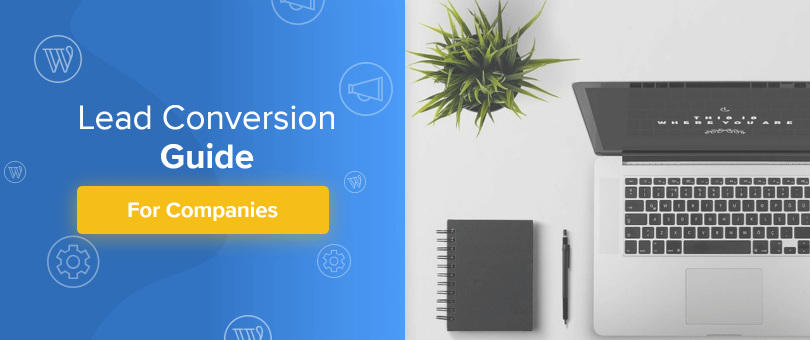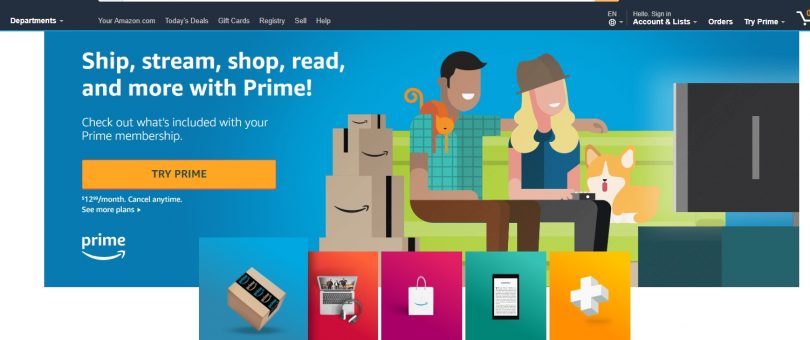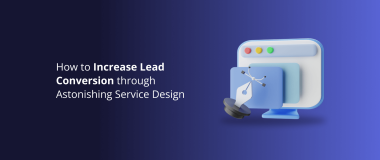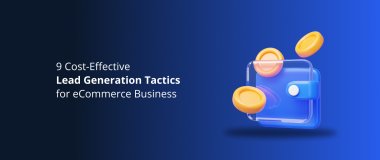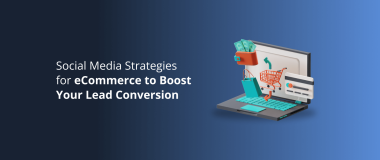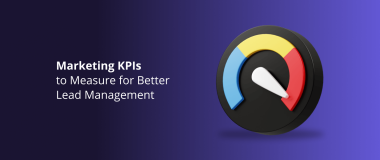Alright, so you have a Facebook page with roughly 600k followers and a Twitter account with a following of around one million. Clearly, you have built a solid audience with your Social Media platforms. You may have even achieved it in a few months or a year or so. Nevertheless, you have clearly become successful in Social Media.
With the expansive growth of your pages, your audience is surely participating more in your posts, ads, promos, and whatnots. This means that your audience has more engagement with your content. With all of this, did you ask yourself, “What do I do next?”
It is time to take your performance in Social Media a notch higher. The audience you have gained through time refers to the leads you have generated. Your lead generation strategies are effective, giving you numerous followers on Facebook and Twitter. Now, it is time for you to focus on Lead Generation to Lead Conversion.
The Importance of Lead Conversion
Don’t you think Lead Conversion is important? Think again. Here is an example.
Picture yourself as the Marketing Head of a large chain of QSRs or quick service restaurants. Your brand is an established name in the industry. You sell easy-to-prepare and on-the-go fast food products.
There is a connotation that fast food restaurants do not really sell healthy food items. With the trend right now that highly patronizes “healthy living” and “organic lifestyle,” the fast food business is negatively affected. The brand which you have put up threatened.
To turn things around, you revamped your menu, highlighted healthy lifestyle concepts in your strategies and advertised accordingly across different channels. At the same time, you created an actual event to support the healthy lifestyle campaign. The event was a fun run, which you launched through actual stores and in virtual places such as Social Media platforms.
With careful planning, everything turned out well. You met the required number of event participants, your followers on Social Media increased, and most importantly, the sales in your fast food outlets went up. You have successfully strengthened the brand.
What’s more? Everyone is starting to trust you and your authority. Even business partners and stockholders are gaining more trust by investing in your company. It’s a happy ending. Just make sure you keep the innovations coming.
Have you followed how lead conversion works? Lead Conversion is not simply about getting new leads and turning them into customers. Effective Lead Conversion is also about revisiting an existing customer base and regaining their trust. It is about capturing the attention of your target personas and making them buy your products over and over again.
Lead Conversion Defined
Lead Conversion is a process that transforms leads or potential customers to actual customers. A lead conversion plan is considered successful when a customer account is created, an individual enrolls in a membership package or a simple download is done. Of course, there is a successful lead conversion when a sale occurs. Lead conversion opens for additional business opportunities.
Leads can be generated from actual marketing events, promotional campaigns, Social Media activities and so on. An enterprise must gather relevant information about its leads, study and use those details to convert leads.
Advantages of Converting Your Leads
So, why do you have to convert your leads? Here are practical benefits of lead conversion.
1. Better Understanding of Your Target Market
To increase your lead conversion rate, you have to improve your lead generation activities, right? Improving the quality of your leads means that you have to know and understand who your target market really is.
As a business owner or marketer, you need to know your customers, what their needs are and how you can provide solutions for them.
2. Higher Conversion Rate Means More Customers
With a better understanding of your leads and with improved lead quality, your conversion rate will increase. This means you earn more customers, which is definitely a great reward for all your efforts.
3. More Customers Translates to Profits
This is self-explanatory. As more and more customers patronize your products or services, your bottom line will improve. Better lead conversion can lead to remarkable increases in profits.
4. Lower Customer Acquisition Costs
When you improve your lead generation and lead conversion processes, you are also maximizing your budget in terms of customer acquisition. For every customer that buys your product(s), there is a certain cost involved in it. This cost may involve marketing, servicing, delivery, administrative costs, among others.
If you are able to use a pre-set budget properly and attract more customers as an end result, you are actually lowering your customer acquisition costs. You get more sales per dollar spent on acquiring a customer.
5. A Stronger Brand Is Created
The end result of your lead generation and lead conversion initiatives results to better financial returns and enhanced brand perception. You have earned more customers, which means a larger portion of the market trusts you. You understand your customers better, your service has enhanced, and the overall user experience has improved.
Financial returns are higher, which means you have more resources to serve your customers better. With all of these, you are able to create a stronger brand.
Do Not Waste Your Traffic, Convert Your Leads
The opportunity can present itself in front of you. It is up to you whether you will grab it or leave it behind. In today’s highly competitive era, it is unforgivable to waste any resources. Your leads or potential customers are among the valuable resources a company will have. This kind of asset should never be wasted.
Make sure not to waste your traffic and start converting your leads. Here are some ways to do it.
1. Understand Your Target Personas
Study your target market and understand their needs. You have to know every detail of your target personas. By understanding them, you can influence their decisions to buy your products and services.
Look at your current customer base. Identify who and what portion of the customers are most of your earnings coming from. Also, assess who among your customers are making a minor impact on your sales performance. You can use demographic, geographic, psychographic and behavioral factors when analyzing your target personals. From there, analyze what products or services are making the most or lesser contribution to your profits.
2. Study the Buying Cycle and Your Sales Process
The customer buying process involves a series of steps that any customer will go through to reach the decision to purchase. As a marketer or business owner, it is vital to learn each step of the buying process so you can effectively promote and sell a product to your target market.
Basically, there are five steps of the consumer buying process. These include the following:
- Problem Recognition – What do people need and want? When identifying needs and wants, always be specific.
- Information Search – Identify possible solutions to people’s needs and wants. Information can come from different sources such as television, radio, the Internet, word-of-mouth, etc.
- Evaluation of Alternatives – After getting enough information about product alternatives, customers will then assess which one is most fitting for their needs and wants.
- The Decision to Buy and the Actual Act of Purchase – Once a product or service stands out from the alternatives, the customer is now ready to decide and make the actual purchase.
- Post-Purchase Evaluation – Customers may consciously or unconsciously evaluate the products or services they have bought. This is when customers assess if they are satisfied with the purchase, will buy the products or service again, or worse, will not recommend the brand.
With enough information at hand regarding the customer’s buying process, you can already plan out your own sales process and successfully link it to the different stages of the buying cycle. Provide the right information relative to what customers need in every step of the process.
3. Choose the Right Channels Preferred by Your Leads
Where do you mostly find your target customers? Part of knowing who your customers are, you have to identify where they abound and how you can reach out to them through the channels they prefer. In the 5Ps of Digital Marketing, the right channels refer to the places or locations where your target market can see you. To elaborate the saying, fish where the big fishes are found.
In today’s world, here are some of the marketing channels you may consider:
- Digital Platforms and Online Marketplaces
- Social Media, Blogs, Web Pages, Video Hosting Channels, E-commerce sites, Email, etc
- Large Format and Print Ads
- Radio or Television
- Direct Selling or Catalogs
- Dealership or Distributors
- Actual Stores
4. Measure Your Conversion Rate
Conversion rate refers to the percentage of your visitors that successfully convert and take a specific action. This rate is taken from the overall number of leads that you have.
For example, out of 10,000 social media leads, only 5% were converted. Thus, only 500 people from your social media followers took specific actions.
Understand your current conversion rate and use it to gauge your lead conversion performance. A higher conversion rate depends on several factors and the things you do to achieve higher customer satisfaction. Make sure to enhance the attractiveness of your brand to your target personas in order to increase your conversion rate.
5. Understand the Lead Conversion Path
The Lead Conversion Path refers to the stages that a lead has to go through for that individual to be successfully converted. The different stages of the lead conversion path must provide the target audience with relevant information. Successfully doing so will increase the likelihood of that target audience to be eventually converted.
The Lead Conversion Path has these basic phases:
- Content Offer – This is the initial stage where a marketer provides important information to leads through relevant contents. Content offer can be done via Social Media sites, direct email, blogs and so on.
- Call-To-Action – Once you have successfully caused a reaction from your leads, a CTA comes in handy. CTAs are buttons or links that a lead can click, and that will take them to a site with more information.
- The Actual Conversion – This is where it all happens. You know when you have successfully converted a lead when any of the following occurs: a customer signs up for a membership, a download occurs, an inquiry is made in exchange for customer details (email, contact number, etc), or when a purchase decision takes place.
6. Offer Relevant Content
Part of the lead conversion path is providing your target personas with the most relevant information through your content. Give your audience the content that will stir their emotions, capture interest and make them more puzzled.
By doing so, it is surely a guarantee that your target audience will click on your content and further progress towards the next step of the lead conversion path. The eventual goal is to convert them into actual customers.
Some of the qualities of relevant content include the following:
- Adds value to your brand and increases brand perception
- It enhances user experience.
- Solves a problem or a specific need
- Relates to current events and not obsolete
- Speaks in layman’s terms and it’s easy to understand
- It’s always relevant, factual and reliable.
7. Make Offers Irresistible
Aside from creating relevant content for your target personas, it is important to make your value proposition irresistible. Your content and offers should be something that the target audience cannot say no to.
Some notable approaches are the following:
- With Amazon Prime, you can enjoy free 2-day shipping, exclusive Prime movie access, unlimited music streaming and a lot more. And all of this for only $99 annually. No wonder not many can refuse this premium membership.
- The American department store chains such as Nordstrom, Costco, BestBuy, Ikea and others let you shop online or in-store. These chains offer one of the best return policies in the market. Items can be returned or exchanged with no time limits.
In the case of Nordstrom, receipts may be required. But just in case you lost your receipt, Nordstrom will track their own monitoring to see check your previous purchase. Even your fine jewelry can be returned. So, how’s the sound of that?
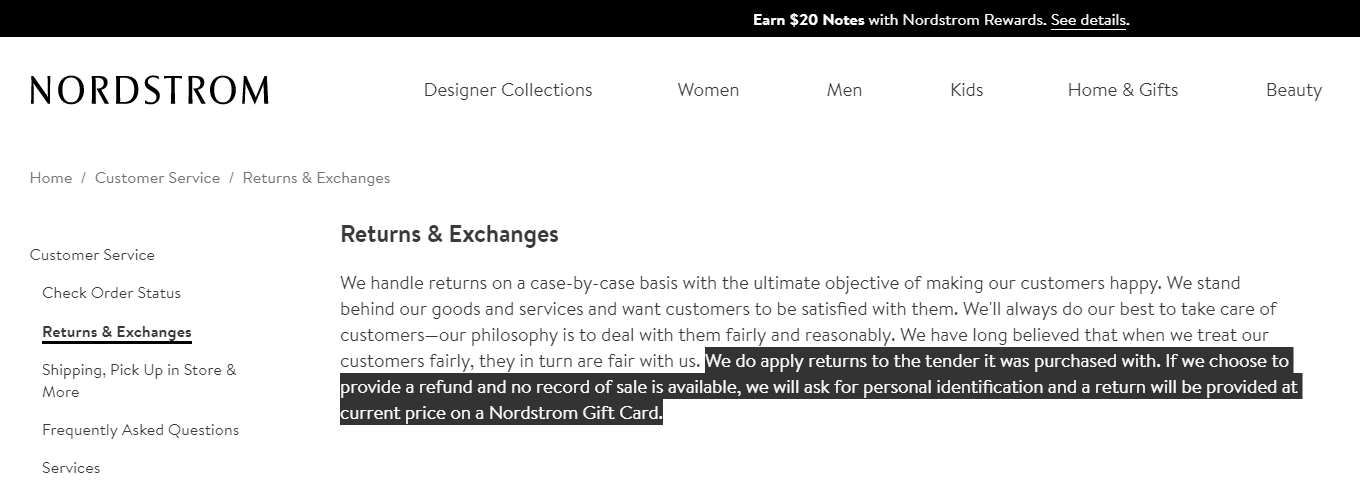
8. The Power of Follow Up
Believe it or not, follow-ups are powerful. Though you do not want to sound too pushy, following up is a good way to continue reaching out to your leads. There is an art when it comes to following up so as not to annoy your customers or followers.
Follow-ups are necessary because, at times, your leads have the tendency to forget or your offer is covered by tons of messages that come to their inbox every day. Your follow-ups will serve as a reminder to your leads about the irresistible offers you have for them.
Wrapping Up
Now that you see the importance of Lead Conversion for your business, you can implement lead conversion strategies that will positively impact your business, strengthen your brand and increase profits for little or no extra cost at all.
There is actually no point of generating a lot of leads if you cannot convert them into actual customers, right? If you think your existing conversion rate and process needs enhancement, now is the time to revisit and improve it.
